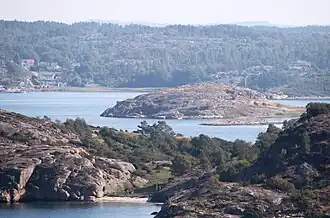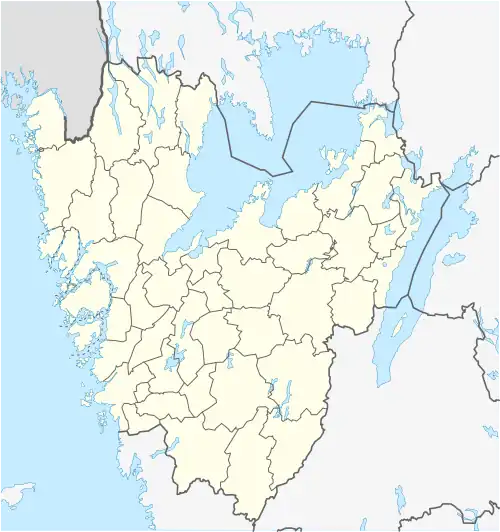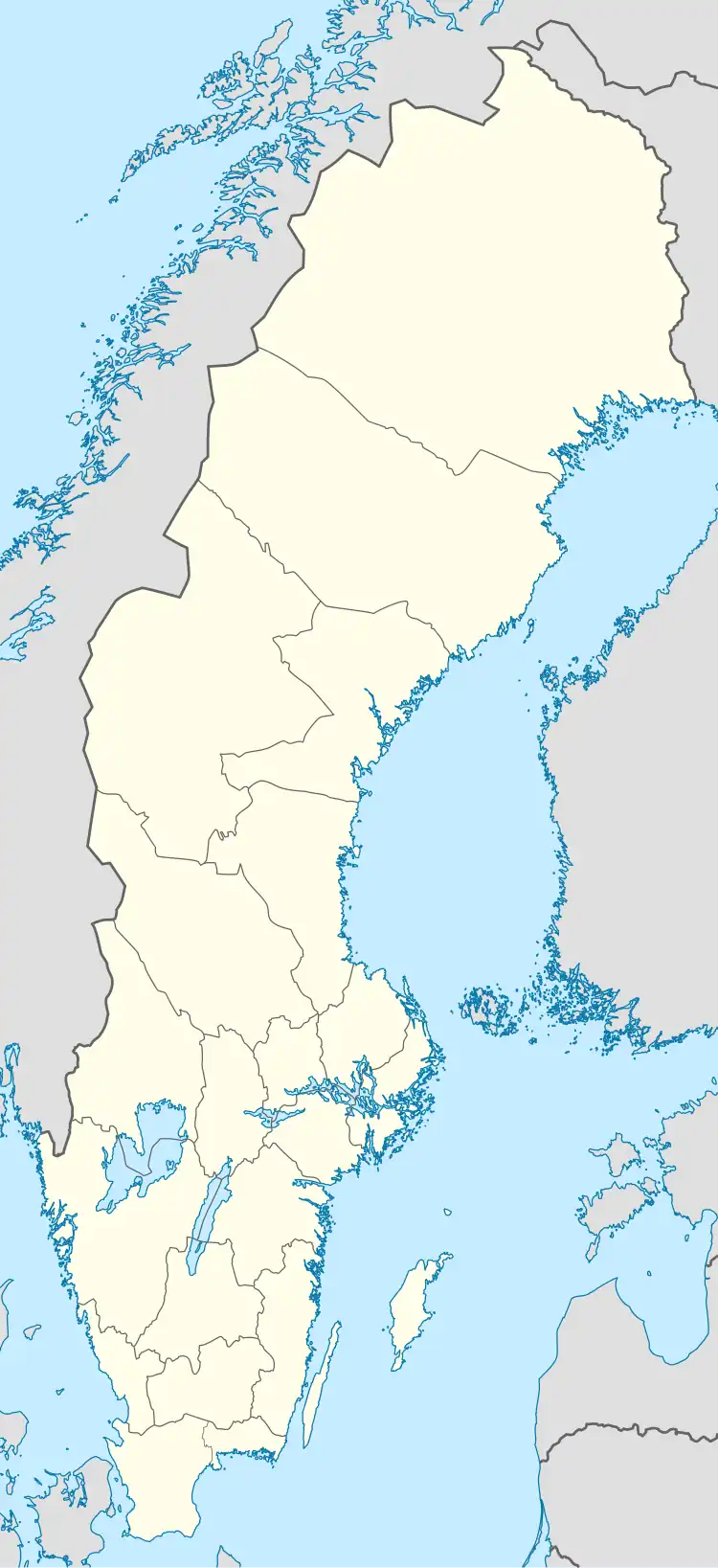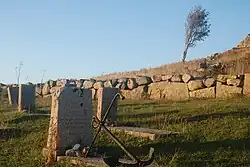Stensholmen
 The island Stensholmen in the Jordfjorden | |
 Stensholmen  Stensholmen | |
| Geography | |
|---|---|
| Location | Hamburgsund, Tanum Municipality. Västra Götaland County, Sweden |
| Coordinates | 58°34′32″N 11°16′27″E / 58.57556°N 11.27417°E[1] |
| Archipelago | Bohuslän islands |
| Area | 0.16 km2 (0.062 sq mi) |
| Administration | |
Sweden | |
Stensholmen is a small island (or skerry)[1] lying off the west coast of Sweden, in the locality of Fjällbacka,[2] and is part of the islands of Bohuslän.[3]
War graves

Stensholmen is the last resting place of a number of German sailors killed in the Battle of Jutland during the First World War and subsequently washed up on and around the island after drifting across the 150 nautical miles separating the island from the site of the battle. The sailors whose remains were found in the area of Stensholmen after the battle include the author Gorch Fock (real name Johann Wilhelm Kinau).[4][5] Fock was found by fisherman washed on the nearby island of Trolleskären on 1 July 1916, roughly four weeks after the battle, and buried on Stensholmen the next day. His grave is decorated with an anchor.[6]
The war grave on Stensholmen was established in 1920 on the southern side of the island, overlooking the sea, and currently is the resting ground of 12 German sailors. A plaque dated 1 July 1920 and installed by the crew of the Lübeck steam-ship Dora can be found at the site.[7]
The graveyard is managed by the German Volksbund Deutsche Kriegsgräberfürsorge organisation.[1][2] In June 2016 the island was visited by a Volksbund travel group in order to restore the graves in celebration of the 100th anniversary of the battle.[8] Visitors in 2016 aboard the Asta also included eight men of the crew of the German navy training ship Gorch Fock, including its commander, Nils Brandt.[6] In August 2020 the island was visited by the German sailing ship Alexander von Humboldt II to pay honour to the dead sailors.[9]
Transport
Stensholmen is only accessible by boat from the port of Fjällbacka, which it is situated a few kilometres away from. The journey takes roughly 20 minutes.[1] As the island lacks a dock or harbour, visitors land at a small bay in the north-east of the island that is accessible by dinghy. This bay is connected to the graveyard by a short path.[7] Stensholmen neighbours the island of Kalvö, which was inhabited by three people as of 2019.[10]
See also
References
- ^ a b c d "Listenansicht der Kriegsgräberstätten: Stensholmen (Schäre)". Volksbund.de. Retrieved 5 September 2019.
- ^ a b "Här begravdes Hitlers soldater i Västsverige". GT. 12 February 2017. Retrieved 5 September 2019.
- ^ Von Issio, Ehrich (17 August 2009). "Mit dem Kajak durch die Schärengärten Schwedens". Welt. Retrieved 5 September 2019.
- ^ Drumm, Russell (16 November 2001). The Barque of Saviors: Eagle's Passage from the Nazi Navy to the U.S. Coast Guard. HMH. p. 91. ISBN 0547799810. Retrieved 5 September 2019.
- ^ Jellicoe, Nicholas (30 March 2016). Jutland: The Unfinished Battle. Seaforth Publishing. ISBN 978-1848323230. Retrieved 5 September 2019.
- ^ a b Ganseuer, Frank (November 2016). "Tod am Skaggerak". Schiff Classic (in German). No. 6/2016. pp. 60–63. Retrieved 13 August 2025.
- ^ a b Tiedt, Christian (13 August 2025). "Special Islands of Europe - Stensholmen". Boote. Retrieved 13 August 2025.
- ^ "Volksbund-Reisegruppe leistete Arbeitseinsatz auf dem Soldatenfriedhof in Stensholmen". Wochenblatt. June 2016. Retrieved 20 April 2021.
- ^ "Praktfullt segelfartyg besökte krigskyrkogård i Fjällbacka skärgård". Stromstads Tidning (in Swedish). 14 August 2020. Retrieved 20 April 2021.
- ^ "PADDLA I HAMBURGSUND". Västsverige. 21 May 2019. Archived from the original on 5 September 2019. Retrieved 5 September 2019.
External links
![]() Media related to Stensholmen at Wikimedia Commons
Media related to Stensholmen at Wikimedia Commons